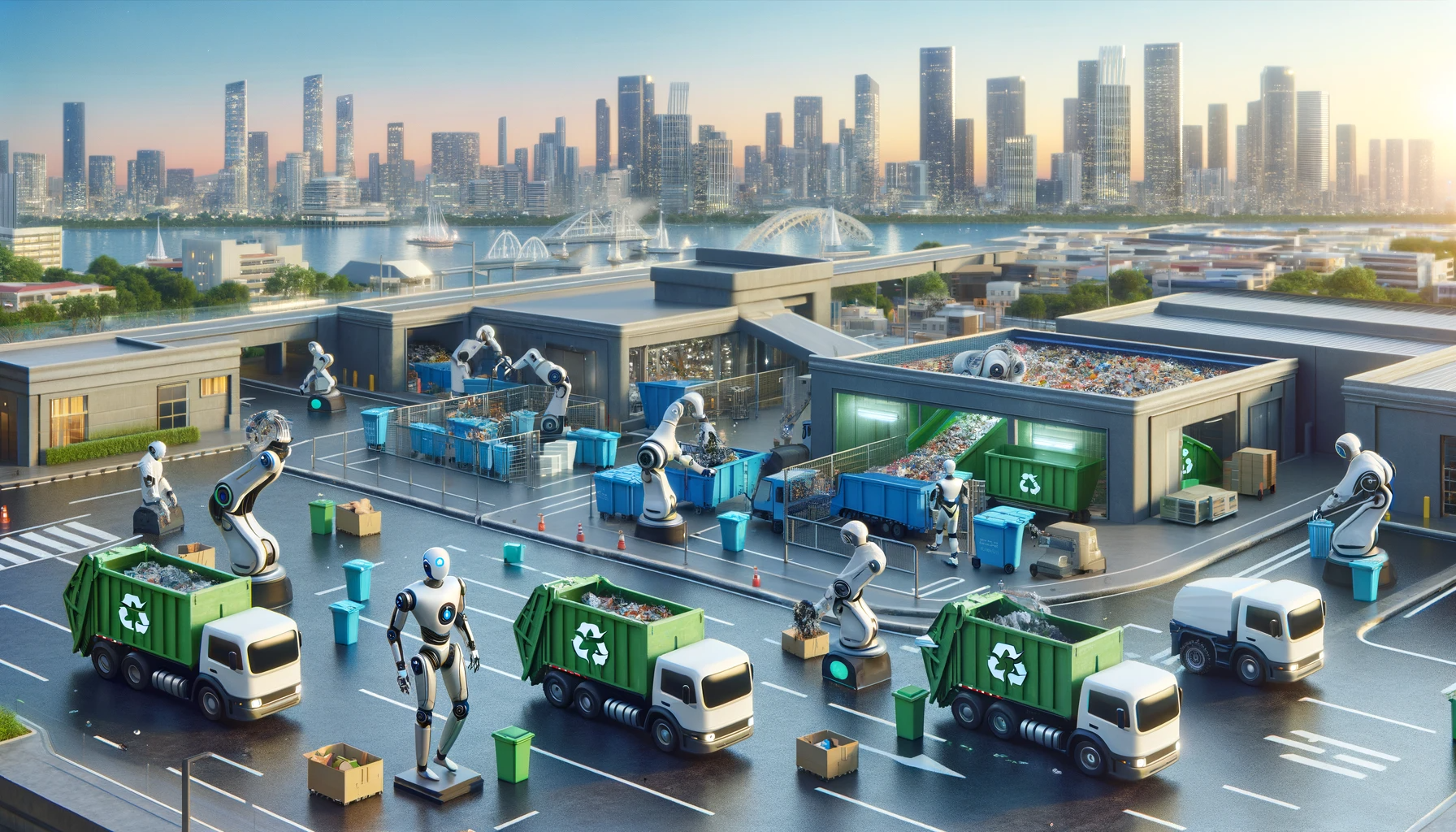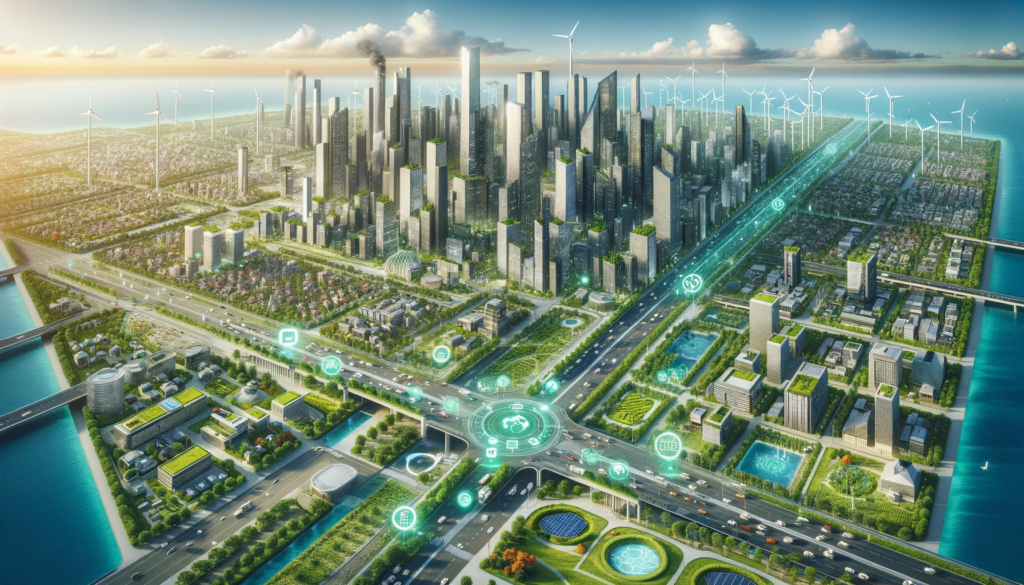Smart and sustainable cities have become an urgent need in our rapidly urbanizing world. As more and more people migrate to urban areas, cities are faced with unprecedented challenges related to infrastructure, resource management, and environmental sustainability. The demand for efficient transportation, clean energy, optimized waste management, and improved quality of life is greater than ever before. In this context, a central question emerges: Can Artificial Intelligence (AI) be the solution to creating smart, sustainable cities that can meet the needs of their growing populations while preserving the environment?
The purpose of this article is to delve into the potential role of AI in addressing the complex challenges of urban planning and management. Urbanization is a global phenomenon, and the development of smart cities that are both technologically advanced and environmentally responsible is a pressing concern. AI, with its capacity for data analysis, automation, and optimization, has the potential to play a pivotal role in reshaping urban landscapes for the better. By harnessing the power of AI, cities can potentially enhance resource allocation, streamline transportation systems, reduce energy consumption, and make urban living more efficient and sustainable.
In the following sections, we will explore the promise of AI in urban planning, examine specific AI-driven solutions for sustainable cities, and delve into the challenges and considerations that come with integrating AI into urban development. Through case studies and examples of AI-powered cities, we will highlight both successes and lessons learned. Furthermore, we will discuss the essential role of collaboration between governments, tech companies, and communities, as well as the significance of effective policy and regulation in guiding responsible AI adoption for urban planning. Ultimately, this article seeks to shed light on whether AI can indeed be the solution to the critical task of creating smart, sustainable cities that can meet the needs of the present without compromising the future.
The Growing Urbanization Challenge
The global trend of urbanization is rapidly transforming the landscape of our world. More people are moving to urban areas than ever before, with the United Nations estimating that by 2050, nearly 70% of the global population will live in cities. While urbanization offers opportunities for economic growth and improved quality of life, it also presents unprecedented challenges for cities.
Cities are facing a multitude of challenges, including strains on infrastructure, resource management, and environmental sustainability. The influx of people into urban areas places immense pressure on housing, transportation, and public services. Overcrowded roads lead to traffic congestion, energy consumption soars, and waste production increases exponentially. Additionally, the demand for clean water, sanitation, and healthcare services intensifies, requiring innovative solutions to meet these needs sustainably.
To illustrate the scale of urbanization, consider the example of megacities like Tokyo, which houses over 37 million people, or Delhi, with over 30 million residents. These cities are grappling with issues related to air pollution, waste management, and housing shortages on an unprecedented scale. The need to address these challenges urgently has given rise to the concept of smart, sustainable cities that leverage technology, including AI, to improve urban living conditions.

The Promise of AI in Urban Planning
Smart cities are a response to the growing urbanization challenge, aiming to create urban environments that are more efficient, sustainable, and livable. These cities leverage advanced technologies, including AI, to enhance various aspects of urban planning and management.
AI holds significant promise in urban planning due to its capacity for data analysis, automation, and optimization. It can play a pivotal role in resource allocation, traffic management, and waste reduction. For example, AI-driven algorithms can analyze real-time traffic data to optimize traffic signal timings, reducing congestion and lowering emissions. Similarly, AI can optimize energy consumption in buildings, lowering costs and reducing environmental impact.
Several cities worldwide are already harnessing the potential of AI in urban planning. Singapore, for instance, employs an AI-powered traffic management system that uses data analytics to predict and alleviate traffic jams. Barcelona uses AI to optimize waste collection routes, reducing fuel consumption and emissions. These examples demonstrate the transformative power of AI in addressing urban challenges.
AI-Driven Solutions for Sustainable Cities
AI offers a wide array of solutions for building sustainable cities. One of the key areas where AI is making an impact is energy optimization. Smart grids, powered by AI, can manage energy distribution more efficiently, reducing energy wastage and promoting the use of renewable energy sources. For example, San Diego in the United States uses an AI-based grid management system that enables better integration of solar energy into the city’s power supply.
Public transportation is another domain where AI plays a crucial role in sustainable urban development. AI algorithms can optimize public transportation routes, schedules, and maintenance, making mass transit systems more efficient and attractive to commuters. Cities like London use AI to monitor and manage their extensive public transportation networks, improving the reliability and convenience of transit services.
Waste management is yet another area where AI-driven solutions are transforming urban sustainability. AI-powered systems can predict waste generation patterns, enabling more efficient collection and recycling processes. Amsterdam, for instance, employs AI to optimize its waste collection routes, reducing the environmental impact of waste disposal.
Additionally, AI technologies such as IoT sensors, predictive analytics, and autonomous vehicles are contributing to urban sustainability efforts. IoT sensors can monitor air quality, water usage, and energy consumption in real-time, providing valuable data for city planners to make informed decisions. Predictive analytics can forecast environmental trends and potential crises, allowing cities to take proactive measures. Autonomous vehicles can reduce traffic congestion and emissions by optimizing traffic flow and minimizing accidents.
These AI-driven solutions hold immense promise for creating smart, sustainable cities that are more efficient, environmentally friendly, and enjoyable to live in. As technology continues to advance, the potential for AI to address urban challenges and enhance the quality of life in cities is boundless.
Challenges and Considerations
While AI holds significant promise for creating smart, sustainable cities, it is not without its challenges and ethical considerations. As cities increasingly turn to AI for urban planning and management, several important factors must be addressed.
One of the foremost concerns is data privacy. The collection and analysis of vast amounts of data in smart cities raise questions about individual privacy and data security. Citizens must be assured that their personal data is handled responsibly and protected from misuse. Striking a balance between the benefits of data-driven decision-making and safeguarding privacy is a paramount challenge.
Another critical issue is the potential for algorithmic bias. AI systems trained on historical data may inherit biases present in that data. This can result in discriminatory outcomes, particularly in areas like housing, education, and law enforcement. To ensure fairness and equity, cities must actively work to identify and mitigate bias in AI algorithms.
Unintended consequences also pose a risk. Overreliance on AI systems can lead to unforeseen challenges. For example, increased automation in transportation may inadvertently lead to job displacement in certain sectors. The consequences of these disruptions must be carefully considered, and strategies for managing them must be put in place.
Transparency, accountability, and public participation are essential elements of responsible AI adoption in urban planning. Citizens should have access to information about how AI is used in their city, and they should have a voice in decision-making processes. Ensuring transparency and accountability in AI systems is essential to build public trust.
Case Studies of AI-Powered Cities
Examining real-world examples of cities that have successfully implemented AI solutions provides valuable insights into the potential impact of AI on urban sustainability. Singapore, often cited as a model smart city, has made significant strides in using AI to improve urban living. The city-state employs AI for traffic management, energy optimization, and waste reduction. As a result, Singapore has seen reductions in traffic congestion and energy consumption, contributing to a more sustainable urban environment.
Copenhagen, Denmark, offers another compelling case study. The city uses AI to optimize its bicycle infrastructure, making cycling a more efficient and attractive mode of transportation. As a result, Copenhagen has become a global leader in cycling-friendly cities, reducing emissions and improving overall urban sustainability.
These case studies highlight the tangible benefits of AI in urban planning, including reduced emissions, improved air quality, and efficient resource use. They also underscore the importance of adaptive and context-specific AI solutions tailored to the unique challenges and opportunities of each city.

The Role of Collaboration and Policy
The successful implementation of AI in urban planning and the development of smart, sustainable cities require collaboration among governments, tech companies, and communities. Governments play a crucial role in setting the regulatory framework and standards for AI use in urban contexts. They must work closely with tech companies to ensure that AI technologies align with the city’s sustainability goals and ethical principles.
Community engagement is equally essential. Cities should actively involve their residents in the decision-making process and seek input on AI projects. This participatory approach not only helps build trust but also ensures that AI solutions address the unique needs and concerns of the local population.
Policy and regulation are essential to guide the responsible use of AI in urban planning. Governments must establish guidelines for data privacy, algorithmic fairness, and transparency. They should also invest in digital literacy and education to empower citizens to understand and engage with AI technologies.
Global cities can learn from each other’s experiences in AI adoption. Sharing best practices and lessons learned can accelerate progress and help cities avoid common pitfalls. International collaboration can also foster innovation and create a network of smart, sustainable cities that collectively address global urban challenges.
Conclusion
In conclusion, AI has the potential to be a powerful solution in creating smart, sustainable cities. It offers numerous benefits, from increased efficiency to reduced environmental impact. However, the adoption of AI in urban planning is not without its challenges and ethical considerations. Data privacy, algorithmic bias, and unintended consequences must be carefully addressed to ensure that AI-driven decisions benefit all residents.
Real-world case studies demonstrate the positive impact of AI on urban sustainability indicators, providing a glimpse of what smart cities can achieve. Collaboration between governments, tech companies, and communities, along with thoughtful policy and regulation, is crucial for responsible AI adoption. As cities continue to evolve in response to urbanization and technological advancements, the transformative potential of AI in building sustainable urban environments cannot be underestimated.
